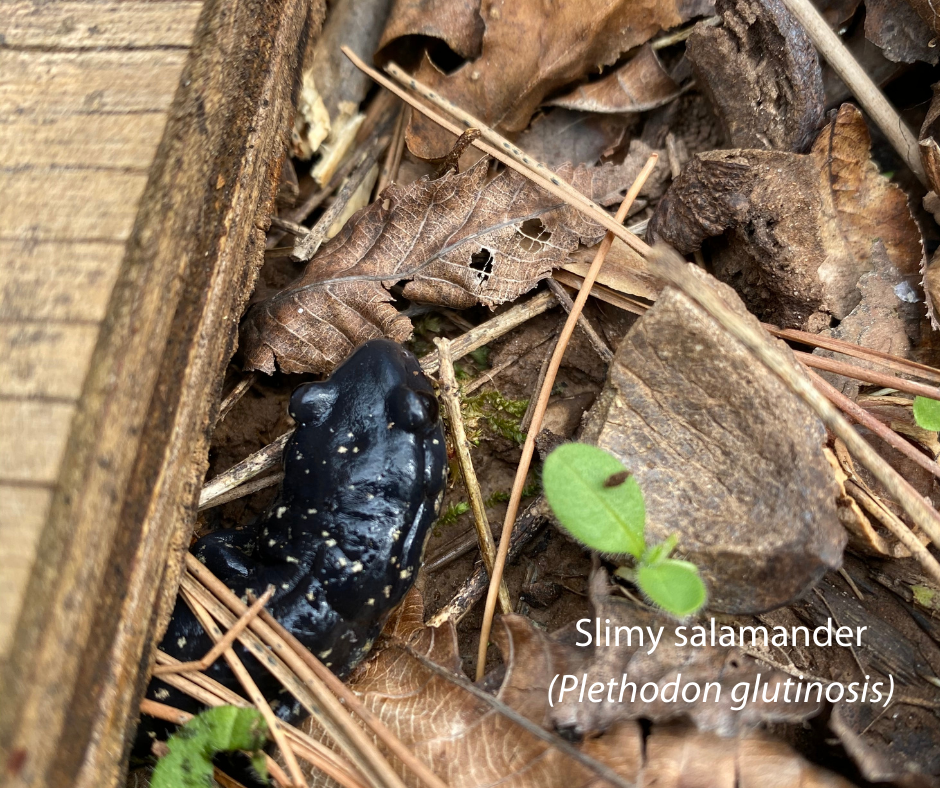Check out our new, retro baseball tee designed by our friends at Yellowhammer Creative!
Click here to purchase yours today! (Get ‘em while they last!)
Self-Led Volunteer Opportunity
The mountain needs your help to control an invasive plant, nandina or heavenly bamboo (Nandina domestica). Nandina berries might be pretty in the home landscape, but when they are gobbled up by birds and spread throughout the forest (scarified by gut acids and deposited along with little fertilizer package), the seeds sprout and wreak havoc on the ecosystem by multiplying and outcompeting native species. The berries contain cyanide and are especially toxic to cedar waxwings and robins, as these birds often flock in and gorge like they’re at an all-you-can-eat buffet.
Nandina is seen around the mountain along many of our trails— most notably along the Quarry trail, Trillium trail, and Nature trail. In order to prevent the next offspring of nandina from propagating, the berries can be removed, and discarded.
How do you help us get rid of nandina? Stop at the invasive plant station at the South Eastlake trailhead where you’ll find berry removal instructions, supplies, and a sign-up sheet. Please let us know which trails you've covered and when, and be sure to tag your photos on Instagram using the hashtag - #ruffnerinvasiveremoval
At Ruffner:
- Remove red nandina berries along trail edges and place them in a bag to be discarded in the trash.
- Be careful if wandering off-trail to collect berries as there are many potential hazards off the trail. Stay within sight of the trail at all times. Be sure to wash your hands after handling the berries.
At home:
- Don’t plant Nandina. (Ha)
- Remove plants and seedlings from your landscape.
- If used as an ornamental planting - collect and discard the fruit.
Invasive Plant Station at South Eastlake Trailhead
Discarded nandina berries
Salamander Season
It’s salamander breeding time!
While inspecting beneath a plywood coverboard, Stella Pfau, Ruffner Project Manager, was excited to find a couple of salamanders. We sent the photo to Megan Gibbons, Professor of Biology at BSC and friend of the mountain, and she identified the salamanders for us. “These are Webster's salamanders (Plethodon websteri), and the one in the foreground is regrowing its tail (you can see the transparent nub where there is recent growth).” She also had this special news, “The one with the tail regrowing also appears to be a gravid female, based on her girth. This species is 100% terrestrial, laying eggs underground, with no aquatic larval stage (which we associate with most amphibians).”
Stella found two more salamanders underneath a log. It’s always exciting to find animal habitats and breeding grounds on the mountain.
The pictures of the slimy salamanders were taken last March underneath the same coverboard.
About the plywood coverboards: You may come across the pieces of plywood scattered about in a few places on the mountain. They are not trash, so please do not disturb. We use them to encounter and assess terrestrial amphibians, lizards, and snakes, as well as beetles and bug larvae.
This is also why it is so important not to disturb or stack rocks. They are homes to the creatures of the mountain!




Frostweed (Verbesina virginica)
Ever take a hike to the limestone quarry on a cold morning and notice the phenomenon of lots of ice flowers formed around the winter bones of frostweed (Verbesina virginica)? These mysterious frost flowers, ribbons of thin ice can be seen in the habitat gardens near the parking lot as well. When ground temperatures are still warm but the air is cold, water is drawn up through the plant stalk, and the stalk splits and cracks along thin vertical lines. The moisture exudes and freezes upon contact with the cold air, and the ice petals push, flow and coil around to form the frost flowers.
Happy New Year!
Make a resolution to go outside, explore, study your surroundings, and learn more about nature.
The dark green fronds of resurrection fern (Pleopeltis michauxiana) stand out amongst the winter browns and grays. During dry weather, the small and scaly fronds curl up, turn brown, and appear to be dead. With rain or fog, they unfurl, turn green and spring back to life.
2021 Holiday Hours
Ruffner Mountain trails will be open for regular hours of operation through the upcoming holidays.
Tuesday - Sunday: 7 AM - 5 PM
Closed on Mondays
A couple of reminders:
If you are a member of Ruffner Mountain, please remember to bring your member parking permit for free entry to the preserve.
Non-members are required to purchase a visitor parking permit for $5 through the ParkMobile app. Cash or card options are available at the vending machine located at the pavilion. The permit covers everyone in your vehicle and is valid for one day only.
The Nature Center remains closed due to the ongoing pandemic and ongoing strategic planning for staff and our board of directors.
From all of us at Ruffner, we wish you a safe and restful holiday!
Trails Start Here…
Trails connect us to each other and to the natural world.
Ruffner Mountain connects communities and ecosystems across East Lake, Brown Springs, Irondale, Roebuck Springs, Greater Birmingham, and all of Jefferson County.
We thank you for supporting the green spaces you use and love!
Look How Far We’ve Come
In 1990, Ruffner Mountain had approximately 30,000 annual visitors and over 1,000 members.
Today, Ruffner has approximately 100,000 visitors and a goal to reach 1,500 members by 2022.
If you are already a member of Ruffner Mountain—Thank you!
Not a member? Help us reach our membership goal of 1,500 by signing up today. By signing up and becoming a member, you will receive a yearly parking permit that grants you free entry to the preserve and facilities.
We also have a fundraising goal of $100,000. By making a donation you are helping us maintain the trails and facilities you enjoy at Ruffner Mountain.
Finally, we'd like to recognize our current and ongoing supporters. Your support demonstrates that you value the ongoing preservation of natural green spaces in your community, and that's something truly special. From all of us at Ruffner Mountain, thank you.



























